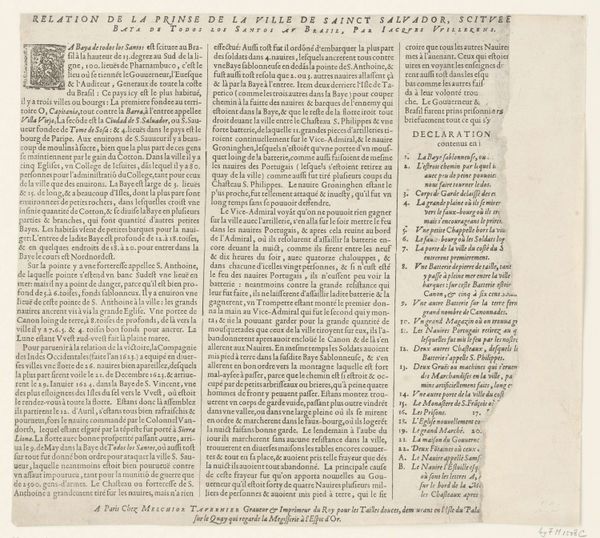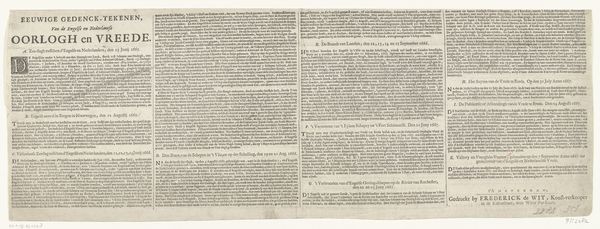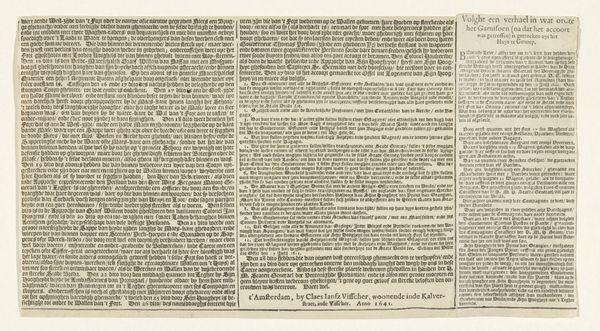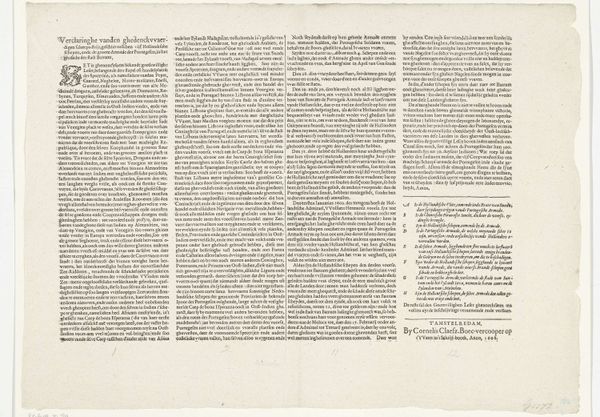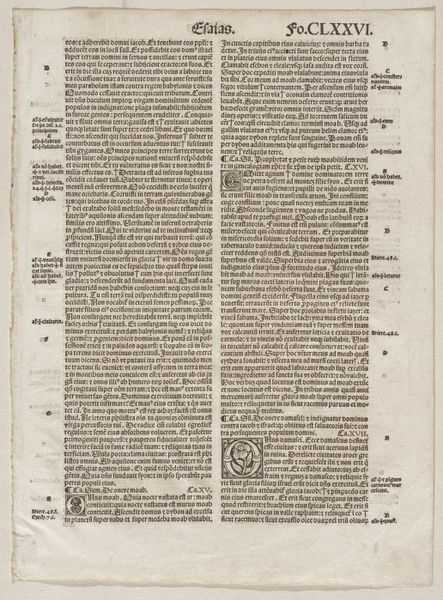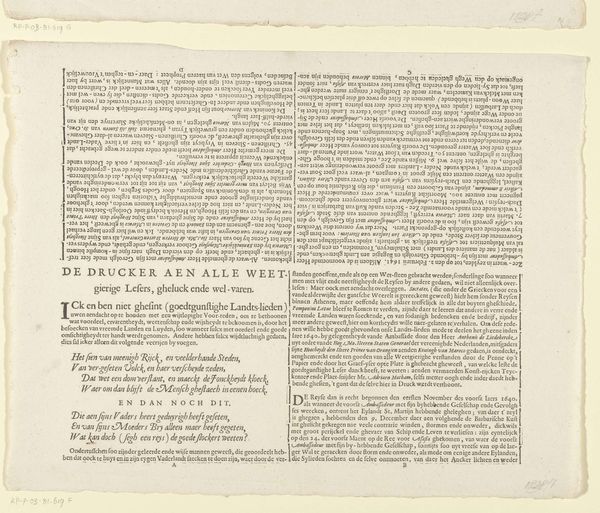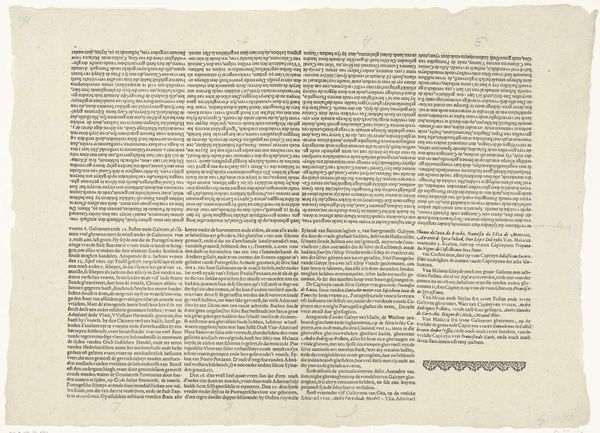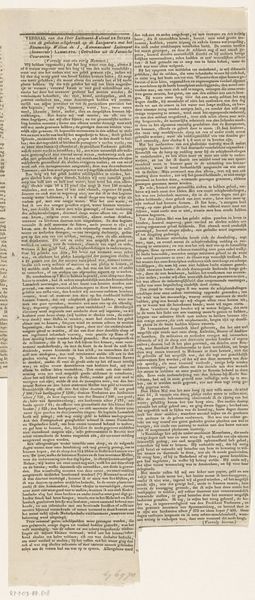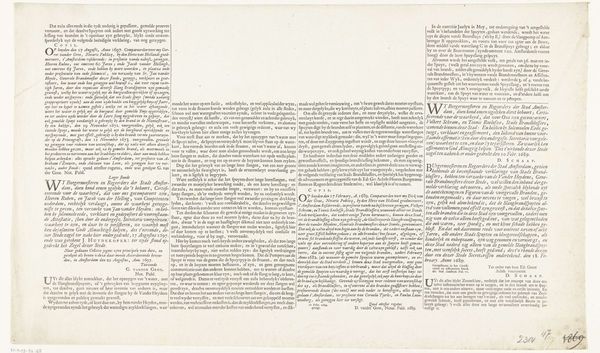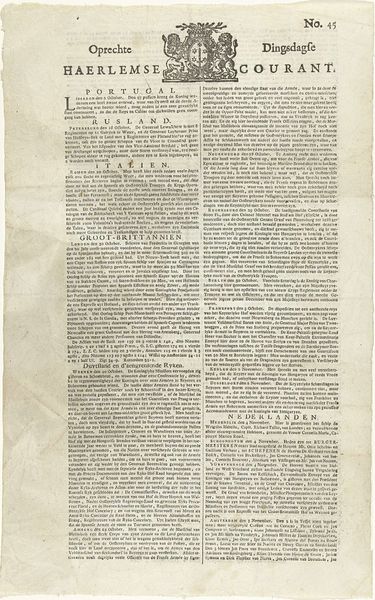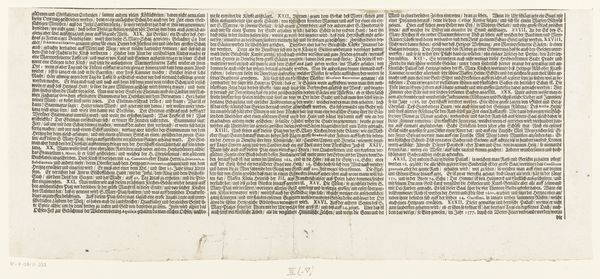
graphic-art, print, paper, typography
#
graphic-art
#
baroque
# print
#
paper
#
typography
Dimensions: height 283 mm, width 368 mm
Copyright: Rijks Museum: Open Domain
This is a text sheet about a view of Nuremberg, made around the mid-17th century by Johannes Janssonius. It’s made with etching, a printmaking technique that uses acid to cut into a metal plate. The plate would have been inked, and then pressed onto paper, transferring the image. The process is critical here. The lines of the text, though precise, were produced through a chemical reaction, a kind of controlled decay. This allowed for a relatively quick method of reproduction, much faster than manual writing. You have to remember that this was before industrialization, and the printing press was one of the most advanced technologies of the day. Look closely and you can appreciate the level of skill and labor involved. Each letterform had to be carefully inscribed, in reverse, on the plate. This painstaking work speaks to the burgeoning information culture of the era, one where reproducibility of information became paramount, yet still relied heavily on the artisan’s touch. It bridges the gap between craft and mass production, a testament to the slow march of technological progress.
Comments
No comments
Be the first to comment and join the conversation on the ultimate creative platform.
